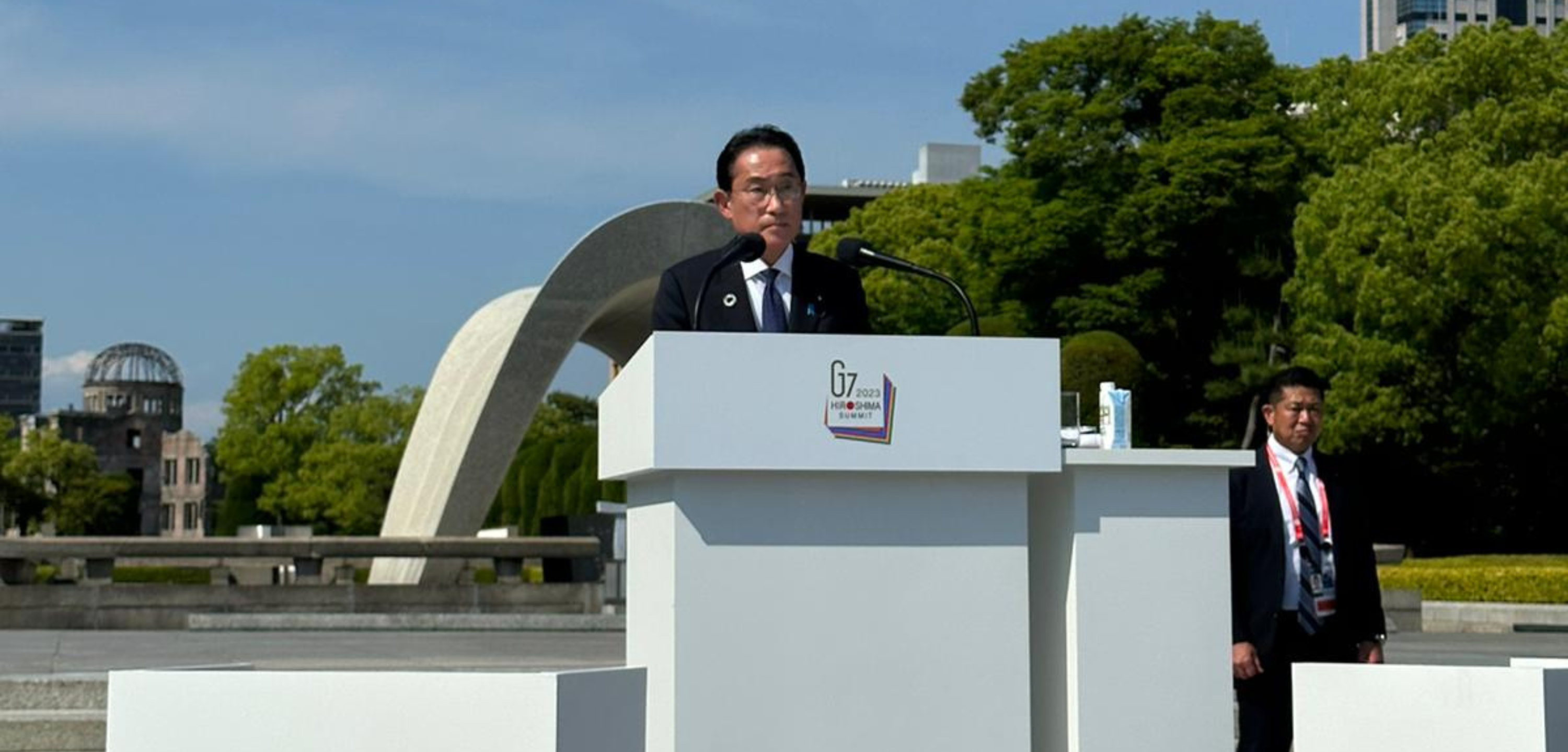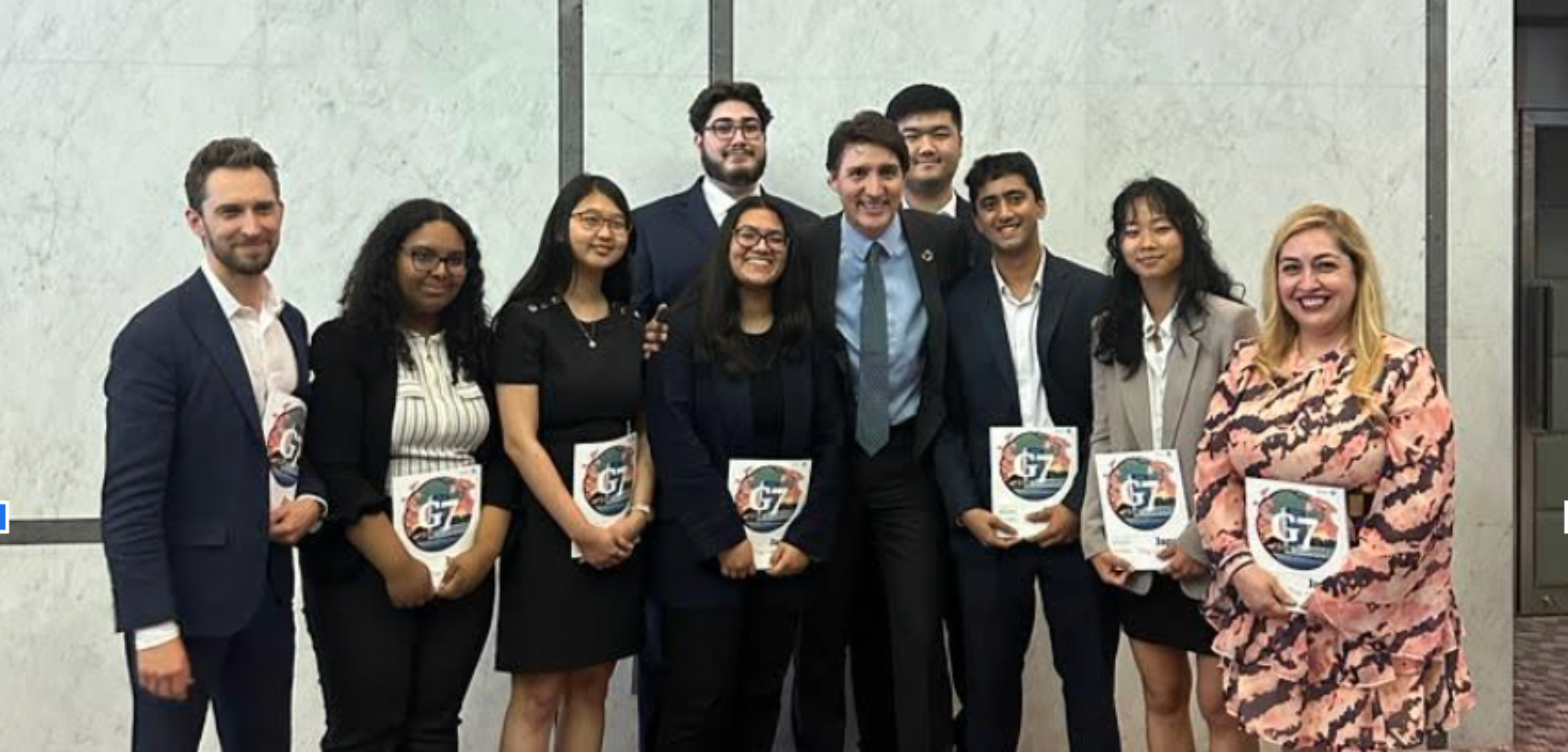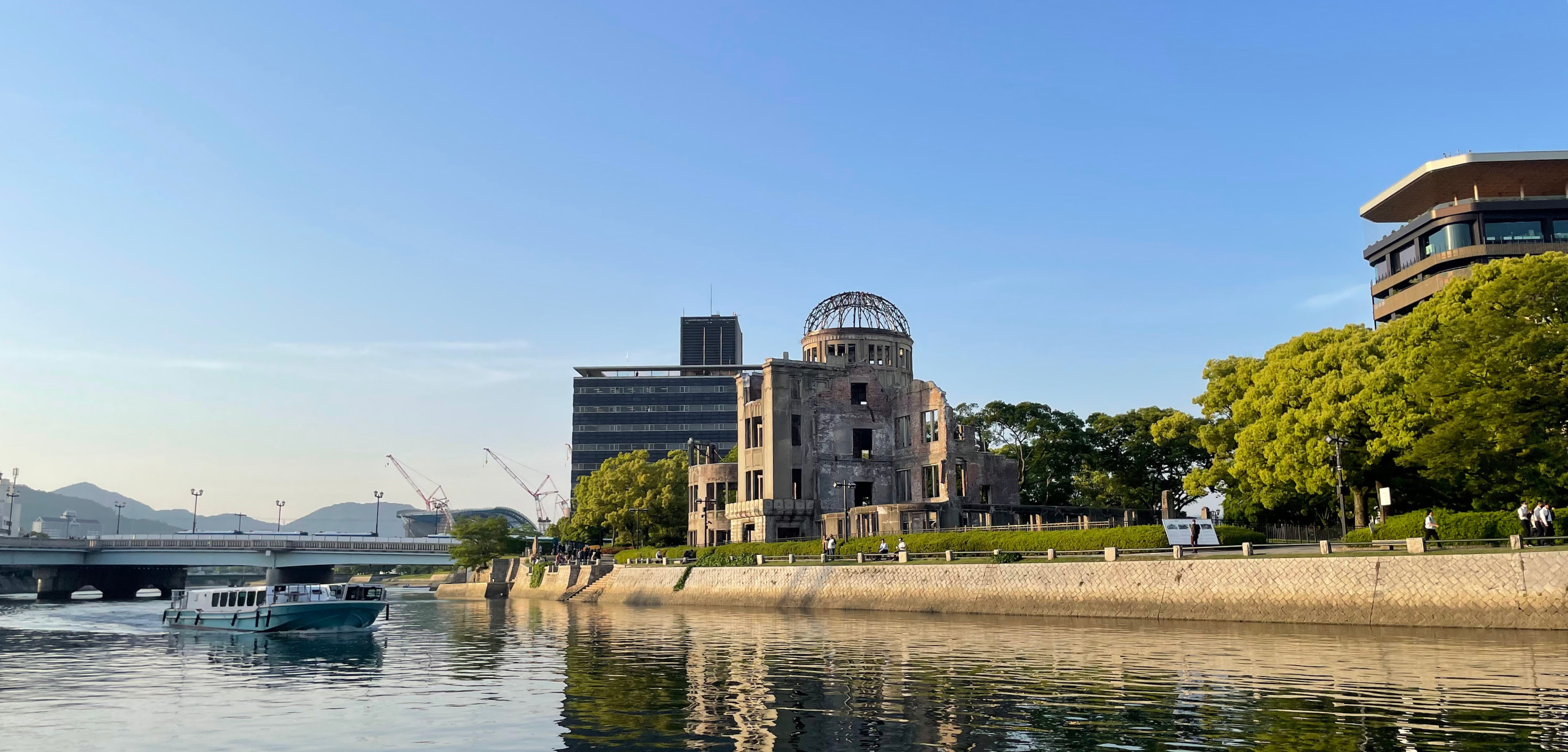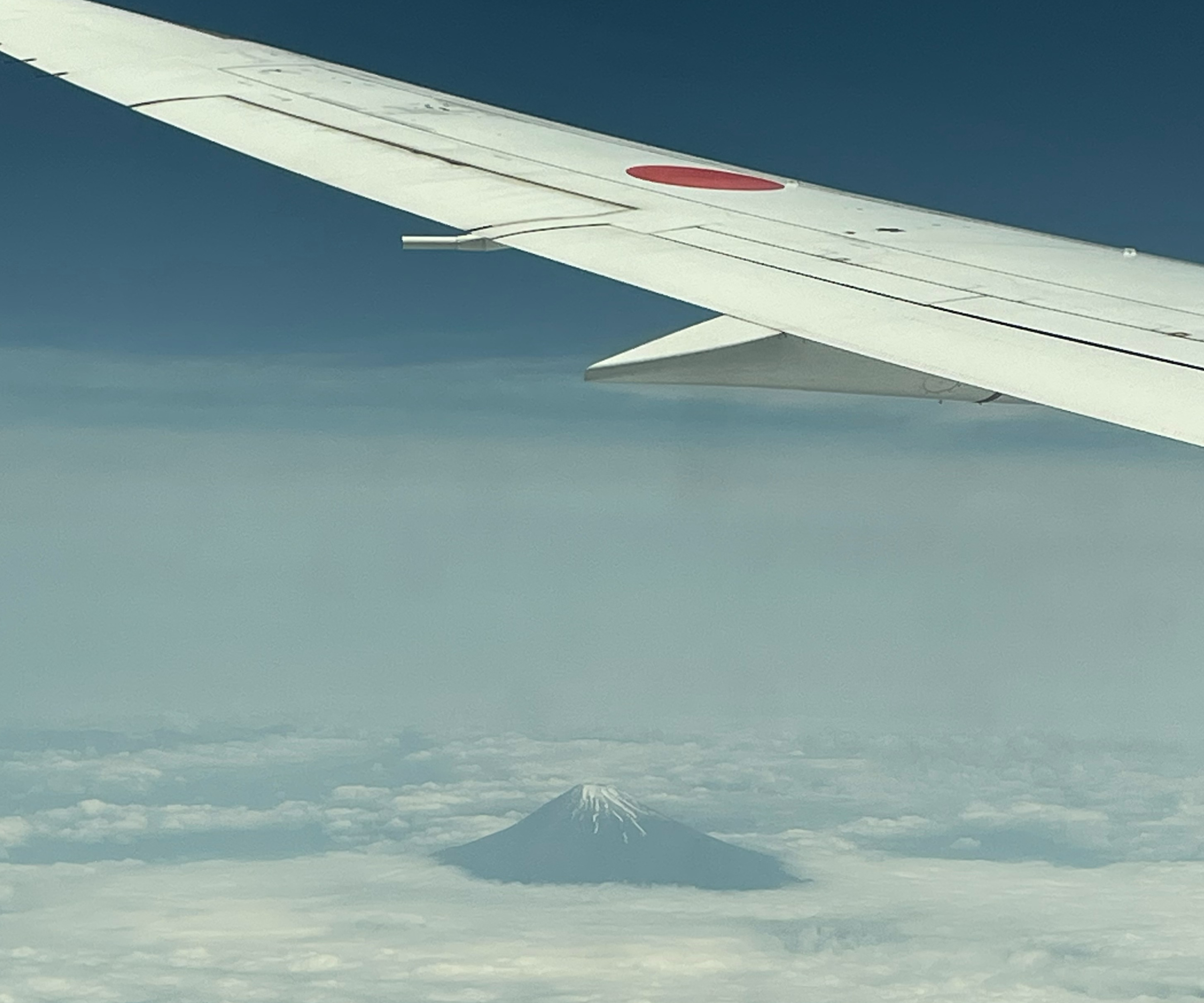Joseph Wong Student Experience at the 2023 G7 Summit in Hiroshima Japan

This year, I had the opportunity to work as the Co-Chair of Summit Studies at the G7 Research Group, leading the student-run portion of the group responsible for researching, editing, and compiling material related to the commitments made at the 2022 G7 Elmau Summit.
Each year, the G7 Research Group produces a report outlining their members’ compliance with the commitments made at the previous summit. The report serves to hold members accountable, inform and engage with public discourse, and promote transparency regarding G7 members' actions. In May, as a member of the Field Team, I traveled to Japan to attend the 2023 G7 Summit and present our year’s research.

At the 49th G7 Summit, leaders gathered in Hiroshima from the 19th to the 21st of May to discuss pertinent issues in global politics and develop a coordinated policy response across member states.
In the G7 Summit’s Media Center, our group presented research findings to international news outlets, spoke to NGOs on how our research may be able to inform their work, and participated in interviews regarding G7 members’ compliance scores and our research methodology. The presentation provided a platform to share our findings from the cycle and connected us with journalists for the widespread dissemination of our research.

The media coverage of our presentation allowed the student-led portion of the group to make our research as accessible to the public as possible— which was one of our main goals.
Alongside this amazing opportunity to present our research findings, we also had the chance to meet and hear directly from G7 world leaders such as the President of the European Commission, Charles Michel, and Canadian President, Justin Trudeau (pictured below with students).

We also had the opportunity to see the Prime Minister of Japan, Fumio Kishida, and President of the United States, Joe Biden. Sitting in on press briefings with these leaders was a highlight of this experience because our group was able to watch the G7 Summit’s on-goings unfold first hand.
Outside of the summit hours, we explored Hiroshima and learned a great deal about the city’s history. We visited landmarks such as the Hiroshima Peace Memorial Park (pictured below), Hiroshima Castle, and the Genbaku Dome.

The summit itself allowed us to observe Japan’s current positioning on the global stage from the source, and we observed the most recent rhetoric and ideas surrounding China’s rise.
As a Contemporary Asian Studies student, I appreciated the opportunity to approach these topics with the lens the program has provided. Putting the summit in historical context, understanding the ideologies of imperialist diplomacy, and discerning a researcher's role in this greater sphere was personally important.
Being able to present research that my team and I have worked on throughout the year and having a front-row seat to the discussions of G7 leaders was truly a unique opportunity. I am so grateful for the support of the Contemporary Asian Studies Program and the Joseph Wong Student Experience Fund for allowing this enriching opportunity to come to fruition.


